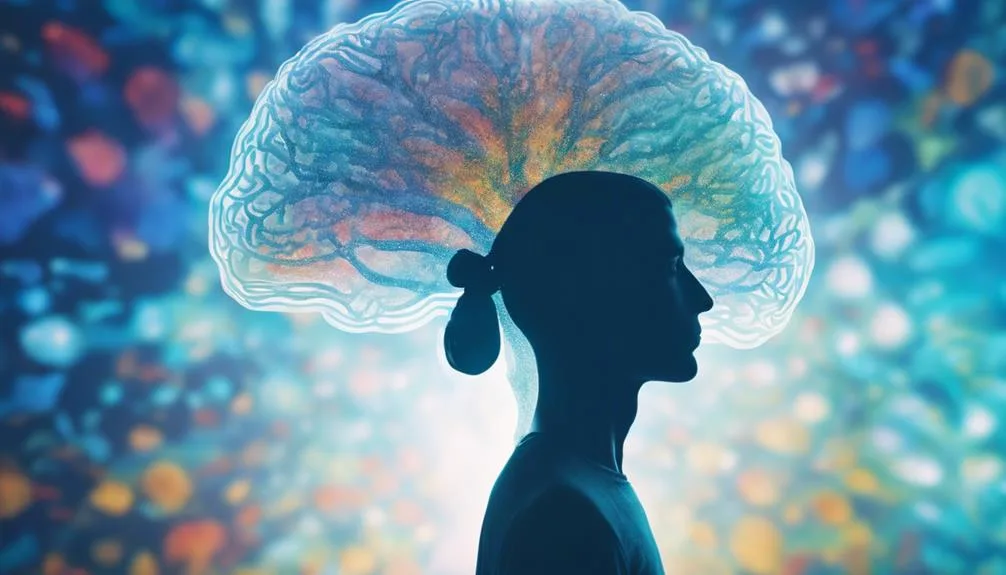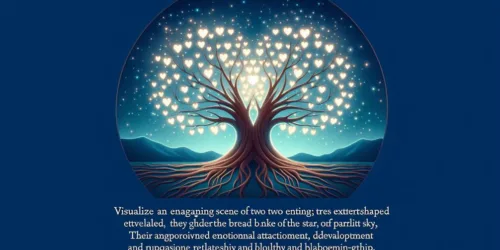Unveiling Mysteries: Visions in Meditation Explained
In exploring the contemplative landscape of meditation, practitioners frequently encounter phenomena such as visions, which stir curiosity and at times, bewilderment. 'Unveiling Mysteries: Visions in Meditation Explained' seeks to demystify these experiences, offering a scholarly perspective on their origins and significance within one's practice.
By examining the interplay between the mind's inner workings and meditative states, the article illuminates the path toward understanding these enigmatic occurrences. As we venture further into this discussion, we invite readers to consider the implications of such visions on their personal journey toward mindfulness and enlightenment, challenging preconceived notions and opening the door to a more nuanced comprehension of meditation's profound depths.
Key Takeaways
- Visions during meditation are often mind-created distractions, not objective realities.
- Engaging with visions can hinder the benefits of present moment awareness.
- Letting visions pass without attachment is crucial for a deeper meditative experience.
- Enjoying meditation without focusing on visions enhances long-term happiness and mindfulness.
Understanding Meditation Visions
Exploring the phenomenon of visions during meditation reveals a complex interplay between the mind's desires, the illusions it generates, and the meditator's approach to these experiences.
When delving into understanding meditation visions, it's essential to tread cautiously, emphasizing mindful observation rather than hastily exploring interpretations.
This approach aligns with empirical evidence suggesting that visions, while intriguing, are often manifestations of the meditator's subconscious rather than insights into universal truths.
A holistic perspective encourages individuals to witness these visions without attachment, recognizing them as part of the meditation journey but not its destination.
The Nature of Meditative Visions
Often, meditative visions emerge as intricate reflections of the practitioner's internal desires and fears, offering insight into the subconscious mind's workings. These experiences, while deeply personal, follow patterns that can be analyzed for a broader understanding.
Through exploring insights gained during meditation, individuals can confront and understand their deepest motivations and anxieties. This process is not about clinging to these visions but rather surrendering attachments to them.
The empirical evidence suggests that this practice of detachment leads to significant psychological benefits, including reduced stress and increased emotional stability. Holistically, meditative visions serve as a bridge between conscious awareness and the depths of the subconscious, guiding the practitioner on a journey of self-discovery and liberation from the bindings of their own mind.
Reactions to Unexpected Visions

While encountering unexpected visions during meditation can be disconcerting, it is crucial to approach these experiences with a mindset grounded in non-attachment and empirical understanding.
Coping strategies centered on mental clarity can significantly aid practitioners in navigating these moments. Empirical evidence suggests that acknowledging visions without assigning them undue importance helps maintain focus and facilitates a return to the meditative state.
Embracing uncertainty and staying present emerge as fundamental principles in managing reactions to unforeseen visions. This approach promotes a holistic perspective, encouraging individuals to view such experiences as part of the broader meditative journey rather than distractions.
Ultimately, the goal is to cultivate an environment where unexpected visions are neither feared nor overly embraced, but rather observed with equanimity and a clear mind.
Embracing the Meditative Journey
Embracing the meditative journey involves recognizing it as a continuous process that unfolds with regular practice, offering profound benefits for mental health and overall well-being, supported by empirical evidence.
This journey is not about reaching a destination but about the mindful exploration of one's inner landscape. Through such exploration, individuals encounter a range of experiences, including moments of profound insight and peace.
The empirical evidence underscores the significance of meditation in enhancing cognitive functions and emotional regulation, thereby contributing to a holistic sense of well-being.
Joyful practices within meditation, such as focusing on gratitude and compassion, further enrich this journey, making it not just a path to greater self-awareness but also a source of enduring happiness and fulfillment.
The Illusion of Visions

Visions encountered during meditation frequently manifest as illusions, revealing the intricate fabric of our desires and subconscious rather than objective reality. These visionary illusions serve as a mirror, reflecting not the world as it is, but the contours of our inner landscape.
Through mindful detachment, practitioners can observe these illusory distractions without succumbing to their allure. Such a stance promotes a deeper engagement with the present focus, anchoring the meditator in the now. Empirical evidence supports this approach, suggesting that the recognition and release of visions as mere mental phenomena enhance the quality of meditation.
Letting Go of Visual Distractions
In the pursuit of a deeper meditative practice, letting go of visual distractions is essential for fostering a state of true mindfulness and presence. Achieving visual serenity and distraction release paves the way for mindful presence and inner peace, which are cornerstones of effective meditation.
| Strategy for Letting Go | Benefits |
|---|---|
| Focused Breathing | Enhances concentration, leading to a deeper state of meditation. |
| Acknowledgment without Attachment | Promotes emotional balance and reduces stress. |
| Environmental Control | Minimizes external visual stimuli, facilitating a tranquil meditation space. |
This approach, supported by empirical evidence, suggests that managing visual distractions is not just beneficial but necessary for attaining a holistic meditative experience. It underscores the importance of cultivating an environment and mindset conducive to inner peace and mindfulness.
Mystical Experiences Decoded

Understanding the process of letting go of visual distractions sets the stage for a deeper exploration into the nature of mystical experiences during meditation. These moments, often described as mystical insights, are pivotal for spiritual growth, representing profound inner revelations that can significantly impact an individual's enlightenment journey.
Through an analytical approach, we recognize that such experiences, while deeply personal, share common threads across various cultures and spiritual traditions, suggesting a universal aspect to the enlightenment experience. Empirical evidence from both neuroscientific and psychological perspectives supports the transformative potential of these experiences, indicating measurable changes in brain activity and psychological well-being.
This holistic perspective underscores the significance of mystical experiences, not just as fleeting moments of inspiration but as integral milestones in the broader context of spiritual development and self-discovery.
Maintaining Focus During Meditation
Maintaining focus during meditation requires a disciplined approach, as it is essential for achieving the desired mental state and reaping the full benefits of the practice.
Breath awareness is a foundational technique that serves as an anchor, drawing the practitioner's attention back to the present moment whenever the mind wanders. Empirical evidence suggests that this simple yet effective focus on breathing not only enhances concentration but also promotes a deeper state of relaxation and mindfulness.
By centering on each inhale and exhale, individuals can cultivate a heightened awareness of the present, thereby minimizing distractions and fostering a more profound meditative experience.
This practice underscores the holistic perspective that true mindfulness is achieved through constant, gentle redirection of attention to the present moment, facilitated by breath awareness.
The Fun Side of Meditation

Exploring the fun side of meditation reveals an often overlooked aspect of the practice, emphasizing the potential for enjoyment beyond the pursuit of mindfulness and stress reduction. Engaging in meditation with a playful mindset not only enhances the experience but also encourages exploring creativity within the confines of one's own mind.
Empirical evidence suggests that adopting a light-hearted approach to meditation can lead to increased innovation and problem-solving skills, as the mind is allowed to wander and explore without judgment or constraint. This holistic perspective underscores the importance of enjoyment in meditation, proposing that fun and enjoyment are not mere by-products but integral components of a fulfilling meditative practice.
Beyond Visions: Deepening Mindfulness
Many practitioners find that transcending the allure of visions during meditation is a critical step towards achieving a deeper, more profound state of mindfulness. This journey towards deepening awareness and cultivating a mindful presence is supported by empirical evidence, underscoring the holistic benefits of sustained meditative practice.
| Strategy | Impact on Mindfulness |
|---|---|
| Acknowledging without attachment | Enhances present-moment awareness |
| Regular practice | Cultivates a deeper state of mindfulness |
| Avoiding vision analysis | Maintains focus and clarity |
| Refocusing on the breath | Anchors the mind, deepening awareness |
| Embracing the meditative process | Fosters long-term mindfulness and joy |
These strategies, grounded in analytical and holistic perspectives, guide individuals towards a more mindful existence, transcending beyond mere visions to a state of profound mindful presence.
Frequently Asked Questions
How Do Cultural and Religious Backgrounds Influence the Interpretation of Visions During Meditation?**
Cultural symbolism and religious narratives significantly shape the interpretation of visions during meditation, offering a holistic perspective grounded in empirical evidence. These backgrounds color perceptions, imbuing visions with meanings deeply rooted in individual belief systems.
While the Article Sections Focus on General Approaches to Handling and Understanding Visions in Meditation, They May Not Delve Into How Specific Cultural or Religious Beliefs Shape the Interpretation of These Visions. Different Traditions and Spiritual Teachings Can Significantly Impact How an Individual Perceives and Values Their Meditative Experiences.
Navigating the labyrinth of meditative experiences, cultural interpretations and religious significance profoundly color perceptions. An analytical and holistic perspective, grounded in empirical evidence, reveals that traditions shape the valuation and understanding of visions, enriching the meditative journey.
Can Persistent Visions Lead to Psychological Issues or Enhancements in Creativity?**
Persistent visions in meditation, potentially rooted in neurological origins or emotional triggers, may influence psychological states or creativity. Analyzing these experiences with a holistic perspective, supported by empirical evidence, can offer insights into their impact and benefits.
Beyond the Advised Reactions to Visions, There's Curiosity About the Long-Term Psychological Effects of Frequent or Intense Visions. This Includes Whether Such Experiences Can Catalyze Creative Breakthroughs Or, Conversely, Contribute to Mental Health Challenges by Blurring the Lines Between Meditation-Induced Visions and Reality.
Navigating the labyrinth of the mind, frequent or intense meditation visions can serve as creative catalysts or challenge mental boundaries. Empirical evidence suggests a holistic approach, weighing both psychological impacts and potential for innovative breakthroughs, is essential.
What Role Do Diet and Physical Health Play in the Nature and Frequency of Visions During Meditation?**
Diet and physical health significantly influence meditation visions, with empirical evidence suggesting that sleep patterns and hydration levels play crucial roles. A holistic perspective emphasizes the necessity of maintaining balanced nutrition for optimal meditative experiences.
Conclusion
In conclusion, the labyrinth of meditation unveils that visions, while seemingly an odyssey into the mystical, are but ephemeral mirages on the journey towards profound mindfulness. Empirical evidence underscores their nature as mere projections, urging practitioners to anchor in the present rather than chase the wind.
Embracing this understanding transforms meditation from a quest for fantastical revelations to a sublime odyssey of self-discovery, enriching the pursuit of wellness and serenity in an unparalleled fashion.






